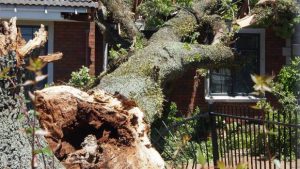Risk assessments are fraught with value judgements scientists make when choosing the upper and lower boundaries of numerical ranges and the assumptions made, especially those involving human behavior.
 Conrad Brunk (right) and co-authors explored this in the 1991 book, Value Judgements in Risk Assessment.
Conrad Brunk (right) and co-authors explored this in the 1991 book, Value Judgements in Risk Assessment.
For the many food safety risk assessors and analysts out there, a New Zealand tree may offer a lesson.
A tree in Rotorua, known as Spencer’s Oak, was deemed to be of a “tolerable” level of risk when it came down in a Jan. 2018 storm and killed a woman.
The 150-year-old oak, believed to be around 23m tall, blocked Amohia St, trapped 56-year-old Trish Butterworth in her car. She died at the scene.
The risk assessment of the tree has been revealed in documents released by Rotorua Lakes Council to Stuff under the Local Government Official Information and Meetings Act.
Benn Bathgate reports that in a tree assessment report from an arboricultural contractor dated February 28, 2017, Spencer’s Oak and a second tree were assessed.
“The assessed risk levels for these trees all fall the tolerable level,” the report said.
“There is some decay evident in some of the buttress roots and in some old pruning wounds. Sounding the trunk and buttress roots with a plastic mallet did not indicate any major areas of concern.”
The report also found several old wire rope cables installed in the tree which were described as “under a lot of tension”, with one frayed and unravelling.
 “Although the cables appear to be under tension there are no signs that these cables are required by the tree.”
“Although the cables appear to be under tension there are no signs that these cables are required by the tree.”
The tree was also described as showing signs of decline.
The report also outlines three bands of risk level; broadly acceptable, tolerable and unacceptable.
“This inspection and report will give the three a risk rating and options for mitigation,” the report said.
“It is up to the tree owners to decide what if any action is to be taken depending on their tolerance of tisk.”
The report’s conclusion said if the examined trees had major deadwood removed, their risk level would be considered as low as reasonably practible.
